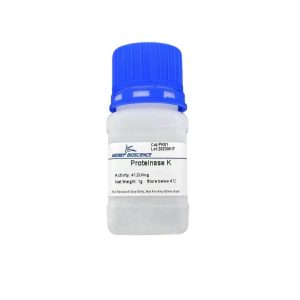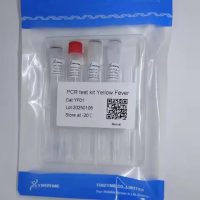Proteinase K has gained significant attention in recent years. It has long been an essential component in numerous research experiments. As a serine protease, Proteinase K is characterized by its high enzymatic activity and broad substrate specificity.
In situ hybridization techniques often employ Proteinase K for sample pretreatment. It digests the proteins surrounding the target DNA, thereby increasing the chances of probe binding to the target nucleic acids and enhancing hybridization signals. In DNA extraction, Proteinase K primarily degrades histones that are bound to nucleic acids, allowing DNA to be released into the solution. Subsequently, DNA can be purified by various methods to remove impurities.

Although Proteinase K is highly stable, its effectiveness may not always be optimal in practical applications. This article aims to provide guidance on how to use Proteinase K effectively for those encountering issues in their experiments.
Q&A

Common Questions and Answers
Q1: What is the suitable pH range for Proteinase K?
A: Proteinase K is active over a broad pH range. It is recommended to use it within a pH range of 7.5 to 11.5.
Q2: What is the recommended temperature range for Proteinase K?
A: The recommended temperature range is 37-70°C, with peak activity at 70°C.
Q3: How should dry Proteinase K be prepared?
A: Dissolve the dry Proteinase K in dilution buffer [20 mM Tris-HCl (pH 7.4), 1 mM CaCl₂, 2% glycerol] to make a 20-40 mg/ml solution. Add Proteinase K to digestion or lysis buffers to achieve a final concentration of 50-200 µg/ml. If the Proteinase K solution is to be reused, it should be aliquoted and stored to avoid repeated freeze-thaw cycles.
Q4: What are the storage conditions for Proteinase K?
A: The lyophilized powder can be stored in a dry environment below 4°C with a shelf life of up to 3 years. The liquid form has a shelf life of 1 year. After opening, if stored at 2-8°C for more than 1 week, it is recommended to filter-sterilize to prevent microbial contamination.
Q5: Is a special stabilizer needed after dissolving the dry powder?
A: No additional stabilizers are required once the dry powder is dissolved in dilution/storage buffer.
Q6: Should Proteinase K be used for nucleic acid extraction from complex samples?
A: It is recommended to use Proteinase K for complex samples such as sputum or fecal samples. These samples may contain substances that inhibit PCR reactions (e.g., glycoproteins, immunoglobulins) and residual RNases. Proteinase K can effectively inactivate RNases, preventing viral RNA degradation and increasing RNA recovery rates.
Q7: How does the concentration of Proteinase K affect experiments?
A: In situ hybridization often involves pretreatment with Proteinase K. However, if the concentration is too high, or if the digestion time or incubation temperature is excessive, it can damage cell structures, leading to tissue section detachment and loss of cell nuclei, which can affect hybridization results. In DNA extraction, if the concentration of Proteinase K is too low, it will affect the degree of protein hydrolysis, resulting in lower DNA yield and purity.
Q8: What are the inhibitors and activators of Proteinase K?
A: Inhibitors: Diisopropyl fluorophosphate (DIFP), phenylmethanesulfonyl fluoride (PMSF). Activator: 1-5 mM Ca²⁺. Calcium ions protect Proteinase K from self-degradation, enhance its thermal stability, and regulate its substrate binding sites. For difficult-to-process samples that require long-term treatment (e.g., in viral transport media), there is a significant need to improve the calcium ion dependency of Proteinase K due to the extended processing time.
Conclusion
Proteinase K has a wide range of applications, including but not limited to leather, fur, silk, pharmaceuticals, food, and brewing. When handling Proteinase K in experiments, it may cause allergic skin reactions. For safety and health considerations, it is essential to wear a lab coat, protective gloves, and safety goggles during operation.
Related Products
PK01, Proteinase K Powder
PK02, Proteinase K solution




